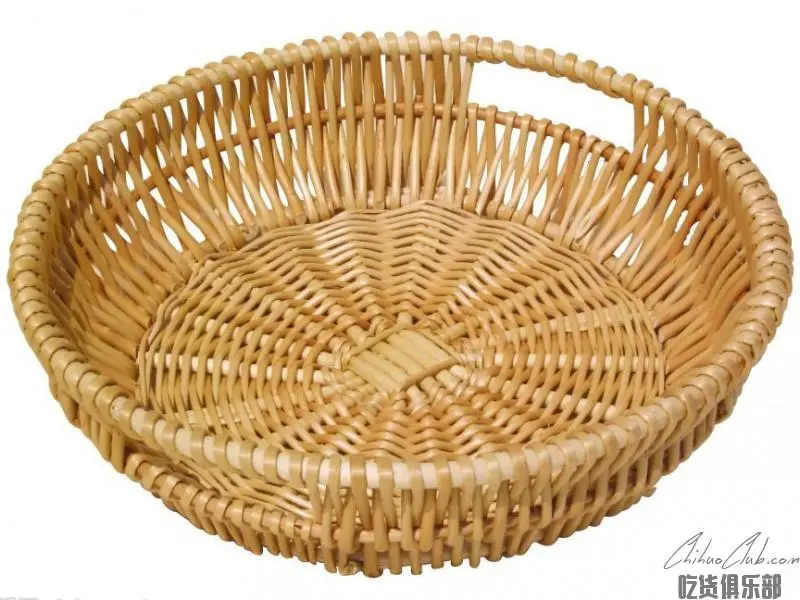
Cheng He wickerwork
-
Update date::
-
Date of protection::
-
Protected range:The scope of protection of GI products by Cheng Heliu is based on the scope of the “Reply on the Protection and Management of Geographical Indication Products of Chenghe Liubian” by the People’s Government of Xiangyang District, Xiangfan City, Hubei Province (Zheng Zheng Han [2006] No. 56), which is Hubei Province. Three towns, including Chenghe Town, Zhuji Town and Shuanggou Town, Xiangyang District of Xiangfan City, are under administrative jurisdiction.
-
Category:
Cheng He Liubian, also known as Liyang Liubian, is a traditional Han Chinese handicraft produced in Chenghe Town, Yinzhou District, Hubei Province, China. Chenghe Town is one of the three largest export bases for Liubian in China. Cheng He Liubian, knitting technology includes six types of clothing, knitting, flat knitting, twisting, fine knitting, and wood knitting. The products involve baskets, baskets, plates, enamel and other household items, as well as vases, screens, picture frames, book boxes, Cradle and other decorations. Cheng He Liu is famous for its soft white, soft and smooth texture and exquisite craftsmanship at home and abroad. Products enjoy a high reputation in the international market.
The environment of Chenghe Town is subtropical monsoon climate with four distinct seasons and abundant rainfall. The annual average temperature is 16°C-20°C, the highest temperature is 40°C, the lowest temperature is -11°C, and the annual average rainfall is 880mm-1100mm. The relative temperature is 75%, the southeast wind prevails in summer, the northeast wind prevails in winter, and the average wind speed is 17 m/s. The town has a flat terrain, with alluvial plains and hills as the mainstay. There is a Tang River in the west of the town. There is a medium-sized Heqinghe reservoir in the east of the town. The reservoirs are densely distributed, the irrigation rate is high, and the groundwater reserves are abundant. The special geographical environment provides good natural conditions for the growth of wicker. The formation of Chenghe Town is characterized by white, soft and smooth wicker, which is a good material for wicker. By 2007, there were 5,000 wicker growers in Chenghe Town, and the radiation base area was 35,000 mu. Historical origin Chenghe Town is known as the “hometown of Liubian”. Liubian has a history of more than 300 years and is located in the northeast of Xiangyang, with a population of less than 30,000. It turned out that this is the floodplain of the Tang River. In the past, farmland was often flooded in the flood season. The wicker is not afraid of cockroaches, easy to grow, farmers use it to make willow products, to talk about life. For a long time, Chenghe Liubian was famous. The local government has been rumored to be "only planting, not arranging, one mu of three thousand (yuan); even the variety of the series, one acre six thousand".
Cheng He Liubian quality technical requirements (a) wicker production requirements. 1. Varieties: green shoots, red buds, and white buds in white willow. 2. Site conditions: Select loam or sandy loam with a cultivated layer ≥ 25 cm, a pH between 6 and 7, and an organic matter content ≥ 1.5. 3. Cultivation management: (1) cuttings: use thick and strong stems, cut into 20cm sections, insert 14cm into the soil, and expose 3 to 4 buds. The cutting time is February, July and November, and the dosage is 150 kg per mu. (2) Planting density: ≤126,000 plants per hectare. (3) Fertilizer and water management: based on organic fertilizer, topdressing N, P, K quick-acting compound fertilizer, of which organic fertilizer is ≥45 per hectare. Moisture management: Irrigation in the wicker season (May, August, October) in case of drought, but not in the field. (4) Shooting: The wicker grows about 1 meter in the spring, and the second one in the autumn grows to about 0.5 meter, and the wicker side sprouts are completely erased. 4. Harvest: (1) Harvest period: 2 years in 1 year, first from June 20 to July 10, and second from December to December. (2) Harvesting requirements: select harvesting on sunny days, peeling strips in time; stripping after harvesting in autumn strips. 5. Quality requirements for wicker. Base diameter ≤1.2cm, no bifurcation, good finish, no spots, ≤40 spots within 1m in length, no bifurcation, strips, 1m within the root tip ratio ≤1mm, folded into a circle of 30 times the diameter of the wicker and continuous The wet strip is blue, the dry strip is white and white, and there is no obvious mottle. The product is processed without eggs (2). 1. Material selection: Wicker that is locally produced and meets quality requirements must be selected. 2. Weaving: Choose one or more combinations of flat knitting, vertical knitting, fine knitting, twisting, and knitting. Wicker accounts for more than 70% of the finished surface area; it must be hand-woven. 3. Product post-processing: hand-knitted products → shaping → drying → product sorting → packaging 4. Product quality characteristics: The product is well-proportioned and smooth, and meets the following requirements: (1) The flat knitting requires the product to be well-proportioned, without broken head and smooth; (2) The product requires a well-balanced product, the skeleton is hard, the stereoscopic effect is strong, smooth, and there is no breakage; (3) The finishing requires that the product is tight, well-proportioned, and the strips are properly matched, and the light has no voids or small gaps; (4) Wrenching requires no twisting of the product, the product is firm and well-proportioned; (5) The staples require the product to be well-balanced, without broken head, without nails, and evenly.
Apply to:
The producers within the scope of protection of the GI products of Cheng Heliu may apply to the Xiangfan Entry-Exit Inspection and Quarantine Bureau of Hubei for the use of the “Special Mark for Geographical Indication Products”, which shall be approved by the General Administration of Quality Supervision, Inspection and Quarantine.